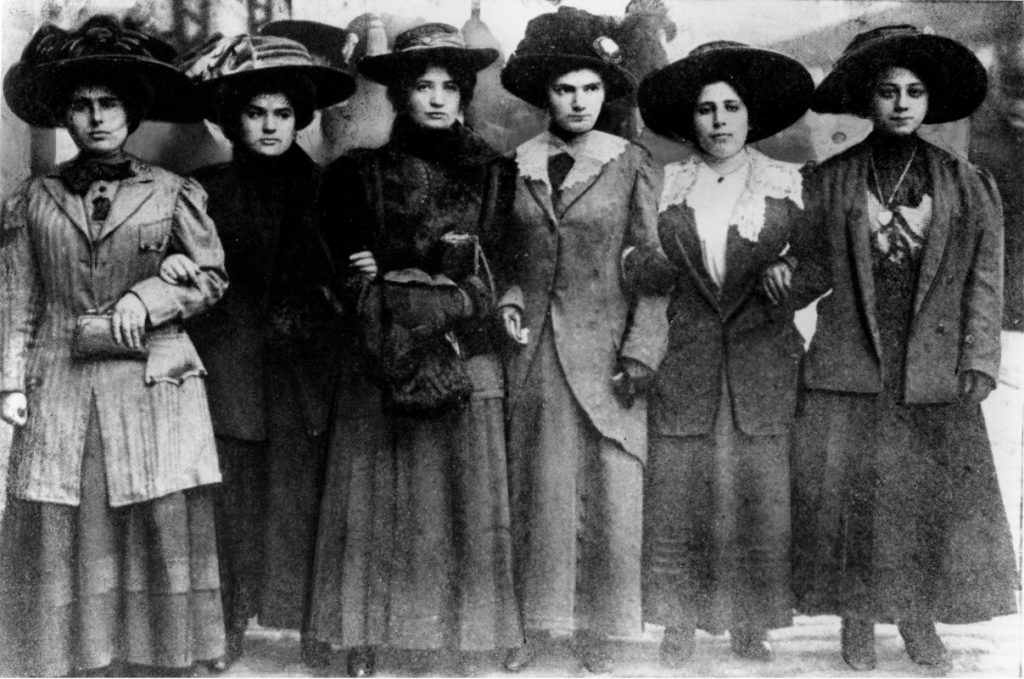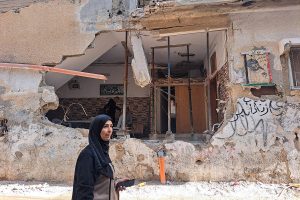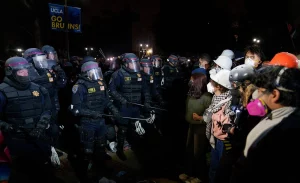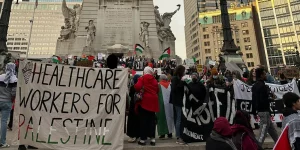History was made on Thursday, March 31 when the majority of over 100 workers at City and Country School, a 108-year-old progressive school in New York City, voted yes for a union. This victory follows a wave of independent schools unionizing in the past few years, such as Manhattan Country School and The Co-Op School. In the U.S., not many private schools are unionized, and this is starting to change. Unionization, as we see in the cases of Amazon, Verizon, and Starbucks, is on the rise across America.
With a union, workers can preserve what they love about their schools, while negotiating for higher pay, better benefits, improved health and safety, job security, a clear grievance process, and more.
While viewpoints vary, some workers believe that unionization will help schools return to their progressive roots. City and Country School was founded in 1914 by Caroline Pratt. Pratt, a political activist and avowed socialist, was among some of the most outspoken advocates for progressive education in New York City during the 1920s.
Pratt’s Early Life
Caroline Pratt was born on May 13, 1867 in Fayetteville, New York. She was the third of four children born to Henry S. Pratt and Lydia Celestia Pratt. Caroline’s father was a village clerk and businessman, and in 1881 was elected Overseer of the Poor, a position that provided to locals in need. Caroline’s mother came from a long line of millers and farmers. Her siblings took to the arts, education, and public service, with one of each becoming a teacher, a bookkeeper, and a postmaster. Caroline gained household and manual work skills by helping her mother after school. In a town called Pompey, not far from Fayetteville, Caroline would spend time helping her great-uncle Homer harvest hay. Homer commented that Caroline was always good around children, and he encouraged her to begin teaching a summer class in a school nearby.
Throughout Pratt’s childhood, she took on the additional responsibility of caring for her sick father. Henry experienced frequent bouts of illness for a prolonged period of time. Pratt had passed all of her high school exams, but finances were tough; she and her siblings worked to contribute money at home while her father suffered. Her academic success secured her a position as an assistant teacher in the Primary Department of the local Union Free School. At the time, teaching was one of the only professions open to women. Pratt was forced to teach the “three R’s”: reading, writing, and arithmetic. She found her own ways to step outside of this strict program, including teaching manners to young boys, such as how to tip their hats to an older woman.
Just before Pratt turned twenty-two, her father killed himself. Years of caring for him and witnessing his continued physical deterioration had ended, and Pratt became more active in all areas, especially teaching.
Activist and Educator
In the early 1900s, Pratt voiced her feminism in the New York Call, a local socialist newspaper. A 1911 letter to the editor shares Pratt’s criticism of Mrs. Prestonia Mann Martin, an anti-suffragist: “Mrs. Martin’s position as an anti-suffragist is clear. She has, by virtue of her ability to put wuzziness on a scientific basis, become a great leader. That she will assume the responsibility of that leadership is not to be expected.”
Pratt was an outspoken socialist. Her name appears in the 1912 Socialist Party rolls as a party member and an elected representative of its standing Committee on Education (Spargo, 1912, pp. 45, 68). She spoke openly about the need for socialism:
“To no one except a Socialist could the situation present a hopeful aspect. […] It is a mad fact that in the profit-seeking world we have built, there is no place and no chance for the children, because there is no profit to be made from them. […] Only a Socialist government will be able to free sufficient funds for a purpose which is not profitable to private enterprise. […] No teacher can handle such classes as we have with any degree of efficiency. They are an absurdity. They correspond to the sweatshops of industry.”
Pratt extended her socialist views into her vision of an ideal school for children. In 1914, she founded The Play School, now known as City and Country School. She merged her expertise working in carpentry with her social and political views to foster a learning environment where children were free to experiment and create. Various forms of art – drawing, painting, sculpting – along with wood shop, movement, and music, were essential elements of The Play School, with the aim of developing the whole child. Just as crucial were trips that children would take into the outside world, and Pratt was intentional in how she envisioned these trips. Looking at education through a socialist lens, Pratt developed a social studies program that included walks around the neighborhood, frequenting shops, factories, parks, and other workplaces to see and study workers in action as they made their living. In reflecting on such trips, Pratt remarked:
More often than not a trip was motivated by an actual problem which arose during construction of the city. A simple question about bringing electricity into a house led to a trip to a powerhouse, and firsthand acquaintance with generators, dynamos, and more particularly with the men who looked after the city’s electrical system and could tell the children what they wanted to know.
Children not only saw workers in the factory or at the construction site; they also witnessed them organizing social struggle:
It was no accident that they came upon parades and mass meetings and picket lines, and returned to school to discuss not only garbage disposal or meatpacking, but also economic and social problems of far greater complexity.
Pratt understood that learning is social and political. It is these rich, open, thoughtful everyday learning experiences that help children to grow as flourishing human beings beyond a school setting. Indeed, Pratt was always connecting her educational philosophy to the political, as frequently demonstrated in her autobiography, I Learn From Children:
Life in school is only another setting for life anywhere. If we were preparing our children to live under an autocratic regime I could understand the need for iron discipline, for suppression of playfulness and friendliness, of adventure or individualism where it raises its head. But we are preparing our children to be responsible citizens in a democracy, perhaps someday in a democratic world. Why then the screwed-down benches, the interdiction on speech, the marching through the halls in silent single file, the injunction on the teacher to behave like a classroom Hitler?
Before Pratt’s work around education and activism in New York, she found her voice in Philadelphia. In the mid to late 1890s, Pratt met Helen Marot, who was a librarian at the Philadelphia Free Library of Economics and Political Science. The two women shared an interest in exploring the current research and literature around labor issues, unionism, social reform groups, and education. During this time together, they fell in love. They would remain lifelong companions and dedicated feminists who supported each other in their various political pursuits as socialists and trade unionists. Sadly, a world riddled with homophobia prevented them from embracing freely as proud lesbians, but their love and support for one another gave them strength as comrades.
Just a few years after meeting, Pratt and Marot gave a talk about the harms of sweatshops during the Christian Social Union’s meeting at St. Luke’s Parish House in Philadelphia. The Church Standard reported that the womens’ presentation “…was a cool, plain statement of horrible facts, all the more pathetic for not being at all sentimental or gushing. It told of hours of work practically unlimited save by the time fixed for the delivery of goods, and of nauseous and unsanitary conditions.” It is suspected that their presentation prompted Pratt’s then employer, the College Settlement, to issue statements shunning sweatshops and encouraging people to find well-reviewed, sanitary tailors instead. It is clear that the outspoken and fearless fact-relaying by Pratt and Marot began to have an impact even in their early days of collaborating.
Between 1909 and 1911, Pratt was on the Financial Committee of the Women’s Trade Union League (WTUL), where Marot was Secretary and organizer. Pratt’s commitment to workplace fairness and socialism made her a target for anti-communist activists, and her name was eventually listed as a member of a Special Committee of the Emergency Committee for Strikers Relief, organized in 1926 to assist strikers in the textile industry.
In 1909, the Shirtwaist Makers’ Strike began. Up until then, it was the biggest strike of female workers in the history of the American labor movement. Pratt was among the names of WTUL allies acting as pickets listed in the New York Times (1909). Pratt encouraged working women to join a trade union and become politically active.
Reimagining Progressive Education
During her years as Principal of City and Country School, Pratt created an atmosphere for children to ask questions and explore relevant political topics that interested them. For example, in 1936, a group of XIIs (seventh graders) wrote a play together and performed it. The group’s teacher, Sybil May, asked the children to write down what they wanted the play to be about. Suggestions included Russia during the Revolution; different scenes in Africa leading to the World War; before and after the War; exploring and settling the Gold Coast; the elevator strike; a play in the mines in France and Germany; and last, a dramatization of the life of Lenin.
The students had a democratic vote, which came down to a tie between a play about a mine on the border between France and Germany during the World War, and a play about the Russian Revolution. At this point, instead of the teacher selecting which play would move forward, she suggested that those who voted for each option go off and put together a rough sketch of their idea, and then perform it for the group. After this, everyone voted again: another tie! Only then did May step in and decide on the coal mine play, feeling that this idea lent itself to more dramatic possibilities. Everyone accepted the decision and moved forward after a long process in which everyone’s voices were heard and options considered.
May reflected on the process in her notes: “What we eventually retained of the original sketch was the main theme of the last scene–that if they feel that a war is not their own, workers will stand by each other even though their countries stand opposed.” Parts of the play emerged from May’s reading aloud of A.J. Cronin’s The Stars Look Down, a story detailing gross injustices in an English coal mining community–a story capturing the theme of profits over people.
Furthermore, May’s notes echo Pratt’s socialist views: “The details are not important, but what is important is how the group drove home the main theme of the play: that the bond between workers of enemy countries can be stronger sometimes than the hostility imposed by a war which is not of their making.”
For children at City and Country School, there was no set “blueprint” or curriculum in place. Pratt viewed the school as an experiment–not one on children, but that involved all members of the community, including children. Math, science, and social studies were embedded parts of their day-to-day life. During a trip in the city, if children noticed a wagon on the sidewalk, they would guess what the wagon contained, where it was going and where it had come from. Children would come back to the classroom and recreate what they’d absorbed from the city landscape: shops and factories, resources, transportation, workers in their environment, and city laws. Children would learn math by opening their own shop and calculating the cost of selling and buying various items.
Critical to the children’s daily experience were their jobs at school. Children worked at the school store, investigating and selling the supplies that teachers and groups needed. These children were immersed in math, dealing with money and receipts. Other children worked at the school post office, collecting and sending letters throughout the school, and some children worked in ways to help prepare and serve lunches to their group mates. Classroom jobs in the Lower School may include a paint washer, sweeper, table wiper, milk helper, attendance helper, and library shelf organizer.
Pratt spent the next several decades at City and Country School until she retired in 1945, continuing as Principal Emerita until her death in 1954. Under Pratt’s leadership, several important and prominent programs were developed, including the Jobs Program discussed above. One such program, the Blocks Program, has been adopted by schools and educators all over the world. Pratt, with her carpentry expertise, developed the wooden unit block in the early 1900s. These unit blocks continue to be one of the most fundamental materials for children to use in early childhood. Children learn firsthand through their play, experimenting with the ways in which different block shapes fit together and support one another. This open-ended play creates an atmosphere for children to question, observe, and engage, allowing them to explore both individually and in groups. Children also use unit blocks to reconstruct and make sense of the world around them, by rebuilding a neighborhood that they’ve walked through or services in a city that they’ve experienced themselves. Blocks open up a wide range of social opportunities through dramatic play, problem-solving, learning to articulate ideas and collaborate with one another.
The Rhythms program is another important staple of Pratt’s legacy. In Rhythms, children move by running, skipping, jumping, twirling, and with specific coordinated movements to thoughtfully chosen music being played live by the school pianist. Rich materials such as cloth, balls, hoops, balloons, and ropes are incorporated to enhance a child’s movement, expression, and creativity. The Rhythms teacher works hand-in-hand with classroom teachers to incorporate themes from Social Studies: for example, a group of second graders studying the Brooklyn Bridge may work together to create the shape of a suspension bridge by connecting their bodies, or may explore tension and compression by tying and pulling on ropes.
Pratt’s legacy as an educator is incontestable and her lasting impact will continue for years to come. What many may not realize are the ways in which Pratt pushed the boundaries of the political status quo as she criticized and challenged capitalist, patriarchal norms. Having become a teacher during a time when women were expected to do so, Pratt came to reject rigid gender norms and expectations in the same way that she rejected certain educational norms. Pratt emerged as an essential voice in a generation of radical activists who challenged traditional views of mothering as “natural” and “biological.” This antiquated view doesn’t see motherhood as unpaid labor, but as an expectation for every person assigned “woman” at birth. Pratt and her radical contemporaries sought to bring motherhood out of the private sphere where it was devalued, and reexamine social structures in a way that view motherhood as more communal and collective.
Pratt is an inspiration for educators everywhere to rethink the role of teaching and education in our society, and to embrace our individual and collective voices to fight for a more democratic world for all.
Note: The views expressed here are those of the author’s, and not the school’s (City and Country School).










